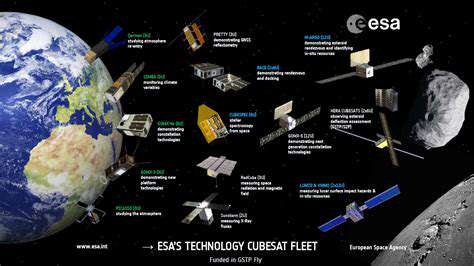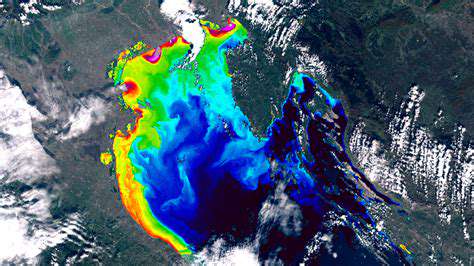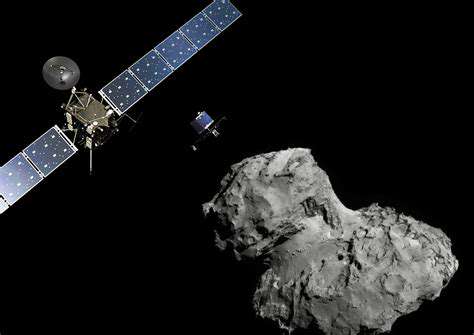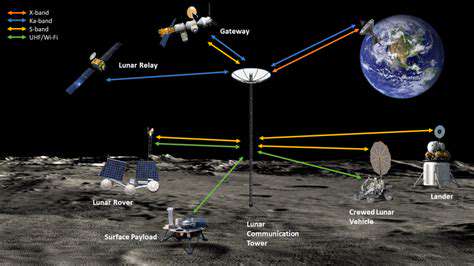Tidal Forces Shaping Europa's Interior
Europa's subsurface ocean, a potential haven for life, is profoundly influenced by the gravitational tug-of-war between Jupiter, its largest moons, and Europa itself. This constant gravitational dance creates tidal stresses within Europa's interior, generating significant heat. The immense tidal forces exerted by Jupiter and its other moons cause the moon to flex and deform, transforming potential energy into thermal energy. This continuous flexing, a consequence of Europa's elliptical orbit and its position relative to other Jovian moons, plays a crucial role in maintaining a liquid state for the hypothesized ocean beneath the icy shell.
This tidal heating is a key driver in the complex geological processes observed on Europa's surface. The interplay of tidal forces, internal heat generation, and material properties within the icy shell and underlying ocean results in a dynamic environment. Understanding these forces is essential to comprehending the potential habitability of Europa's subsurface ocean and the ongoing geological activity that may support the existence of life.
The Role of Internal Structure in Tidal Heating
Europa's internal structure plays a significant role in amplifying the effects of tidal heating. The precise composition and layering of Europa's interior, including the thickness and properties of the icy shell, the extent and nature of the subsurface ocean, and the composition of the rocky mantle, profoundly affect how tidal forces are absorbed and converted into heat. The presence of a liquid water ocean and a potentially deformable layer of ice are critical factors in the efficiency of tidal heating, affecting the overall thermal budget of the moon.
Variations in the thickness and composition of the icy shell can influence how heat generated by tidal forces is transferred to the subsurface ocean. A thinner or more ductile ice shell would allow for more efficient heat transfer, potentially impacting the temperature and stability of the ocean. Understanding these internal structures is essential to accurately model the thermal evolution of Europa and assess the potential for liquid water to persist over geological timescales.
Furthermore, the presence of a rocky mantle, with its potential for internal heat sources, could contribute to the overall thermal budget of Europa, potentially augmenting the tidal heating effect. The relative contribution of radioactive decay versus tidal forces to Europa's internal heat is a topic of ongoing research and investigation.
Implications for Habitability and Future Exploration
The substantial tidal heating generated within Europa's interior has profound implications for the potential habitability of its subsurface ocean. This heat source provides a potential energy source for chemical reactions and sustaining liquid water, which are considered prerequisites for life as we know it. The sustained availability of liquid water, along with a potential chemical energy source from hydrothermal vents or other geological processes, raises the possibility of a habitable environment beneath the icy surface. This makes Europa a prime target for future exploration.
Missions like the proposed Europa Clipper mission, designed to study the moon's surface, subsurface ocean, and potential habitability, are crucial to understanding the extent of tidal heating and its impact on the moon's overall evolution. Data collected by these missions can provide invaluable insights into the geological processes driven by tidal forces and the potential for life beyond Earth.
Exploring the Potential for Habitability: Clues from the Subsurface
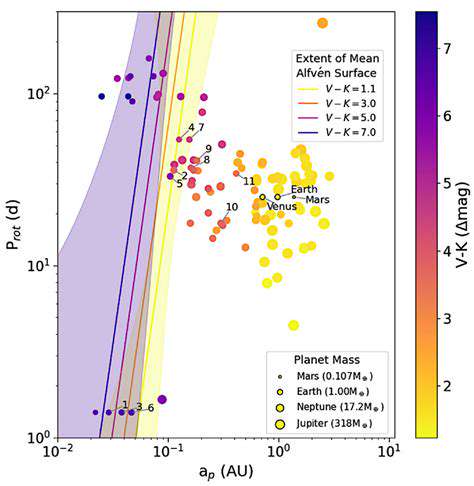
Understanding the Concept of Habitable Zones
The habitable zone, or Goldilocks zone, is a region around a star where conditions are just right for liquid water to exist on the surface of a planet. This crucial element is believed to be essential for life as we know it, as liquid water is a fundamental component of biological processes. Understanding the factors that define these zones is crucial to the search for extraterrestrial life and helps narrow down the search to planets with the potential for supporting life.
Precisely defining the boundaries of a habitable zone is complex and depends on the characteristics of the star itself, particularly its mass and temperature. Stars with lower masses and cooler temperatures have smaller habitable zones closer to the star, while more massive, hotter stars have larger habitable zones farther away.
The Role of Planetary Size and Composition
Beyond the star's characteristics, the size and composition of a planet play a vital role in its ability to support life. A planet that's too small may not have enough gravity to hold an atmosphere, essential for regulating temperature and providing protection from harmful radiation. Conversely, a planet that's too large may have a dense, hostile atmosphere.
The presence of a substantial atmosphere, rich in gases like nitrogen and oxygen, is critical for the development and sustenance of life. The composition of a planet's surface, including the presence of water and other essential elements, also significantly impacts its habitability.
Impact of Stellar Activity and Magnetic Fields
Stellar activity, including flares and coronal mass ejections, can have a significant impact on the habitability of planets within the habitable zone. These events can strip away a planet's atmosphere, making it uninhabitable over time. The presence of a strong planetary magnetic field is crucial for deflecting harmful radiation and protecting the atmosphere.
A planet's magnetic field acts as a shield, protecting its atmosphere and potentially its surface from harmful radiation from the star. The absence of a strong magnetic field can lead to the erosion of the atmosphere, making the planet uninhabitable.
Atmospheric Conditions and Greenhouse Effects
The composition and density of a planet's atmosphere play a critical role in regulating its temperature. Greenhouse gases, like carbon dioxide and water vapor, trap heat in the atmosphere, preventing it from escaping into space. However, an excessive amount of greenhouse gases can lead to a runaway greenhouse effect, making the planet too hot for life.
The Search for Biosignatures and Evidence of Life
Identifying signs of life, or biosignatures, on potentially habitable planets is a key goal in the search for extraterrestrial life. These biosignatures could include specific gases in the atmosphere, such as oxygen or methane, or evidence of past or present biological activity on the planet's surface.
Analyzing the atmospheric composition of distant planets is a crucial tool in identifying potentially habitable environments. Advanced telescope technology and sophisticated atmospheric modeling are essential for interpreting these data and drawing conclusions about the possibility of extraterrestrial life.
Future Exploration and Discoveries
Further exploration of the universe and the potential for habitable planets will rely on advanced telescopes and space missions designed to detect and characterize exoplanets. Technological advancements in astronomy and astrobiology are crucial for expanding our knowledge of planetary systems and the potential for life beyond Earth.
The discoveries made in the coming years will undoubtedly reshape our understanding of the universe and our place within it. The search for habitable planets is an ongoing journey, driven by a fundamental human curiosity about the existence of life beyond our own world.

